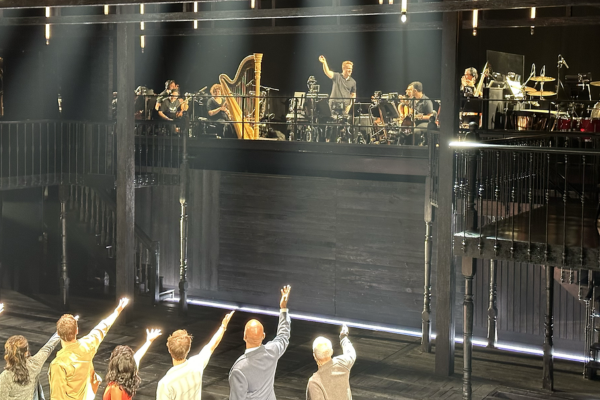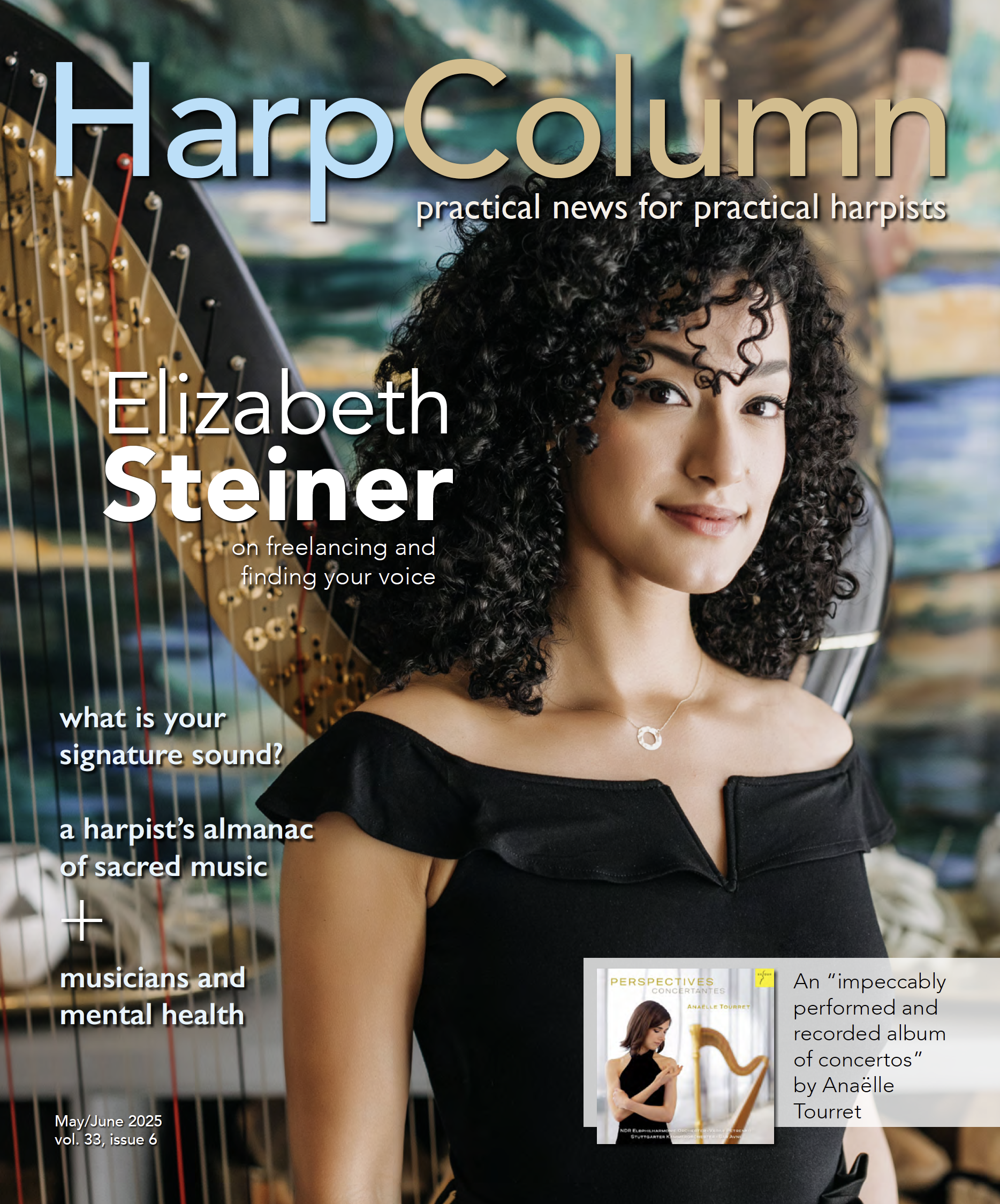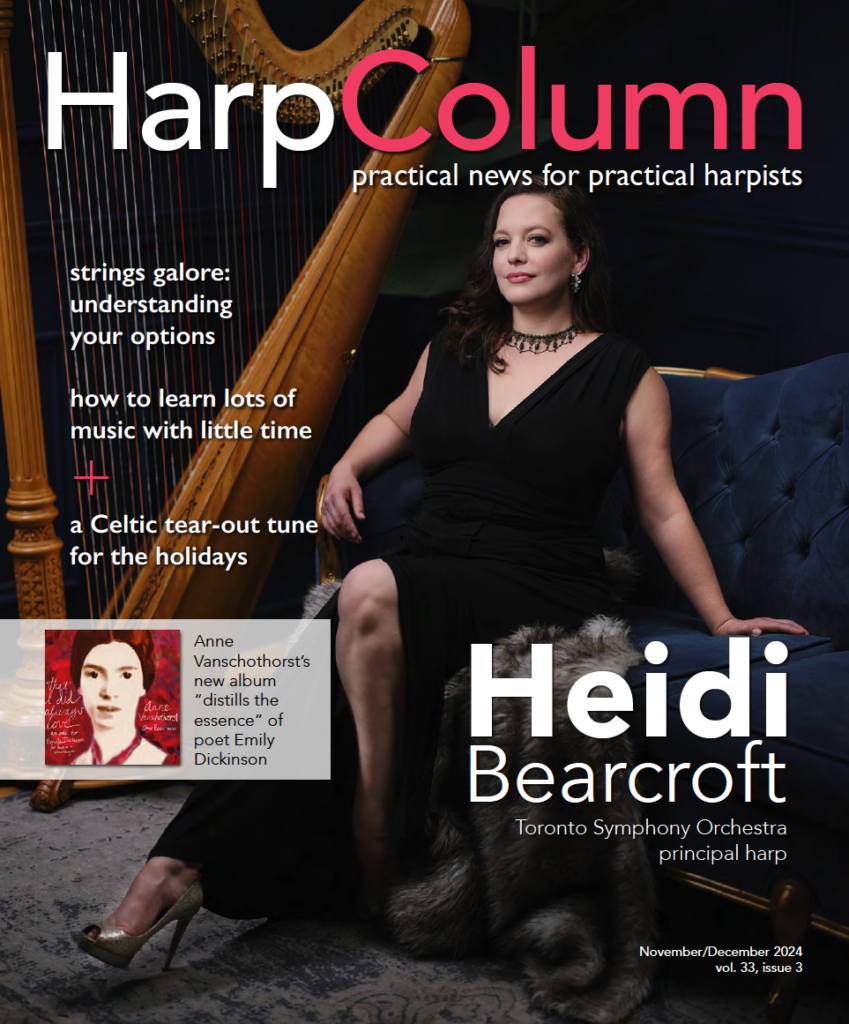
My favorite part of being a freelancer in New York City (or should I say the redeeming part) is getting to work on so many new and exciting musical projects. Being the harpist for The Notebook on Broadway is definitely one of those.
Solo harp opens the show and is used throughout to illustrate the show’s emotional storyline. The music creates a lush, romantic vibe, much different than the typical Broadway production of upbeat entertainment. A lot of orchestrations aim to sound big all the time to give the most bang for your buck. I love that The Notebook orchestrators allowed it to be small, to sound like chamber music, with two or three instruments, then let the music swell for big moments. This was particularly effective in a visceral way during the rain scene in “Forever,” and the 11 o’clock number “My Days.”
I should explain the rain scene—it actually rains on stage! The water drains into a small “river” near the front of the stage, and from there, it is diverted to water tanks in the orchestra pit. To make this elaborate theatrical display possible, the creative team moved the orchestra from the pit to a raised band platform at the back of the stage that is revealed at the end of the show. Since the audience has a clear view of the orchestra during both the bows and exit music, I have been recognized as the harpist when leaving the stage door. As musicians, we are used to flying under the radar, but it is nice to feel more a part of the show.
I started rehearsals for The Notebook back on February 1. The musicians met for a few days without the cast to read through the charts—this is the first time we saw the music. We ran through the songs with the actors in a rehearsal space, then loaded into the theater. Once in the theater, the process slowed as all the technical aspects were integrated into the scenes and songs. The show opened on February 10 in what they call a preview period. The audience sees a fully executed show, but there can still be changes made, including cuts, edits, new lines, new keys, even new songs, for about a month. Finally comes the show’s official opening night where it gets reviewed.
From that very first day of rehearsal, the part felt idiomatic, and the songs didn’t sound like any other Broadway show I had been a part of. This is because of the music and lyrics of Ingrid Michaelson. The songs have the theatrical elements needed for a musical but the cast album sounds more like a pop album you’d hear on the radio. The songs are filled with layers of color and counter melodies. The harp part takes on a comping role more like a guitar than a typical harp part. What all this boils down to is that I get to feel like I’m playing in a band for eight shows a week!
Deciding the instrumentation for a musical involves a lot of people. In this case, the songwriter, music supervisor and arranger, orchestrator, and, ultimately, the producers need to agree that an instrument will be an integral voice for the show. The seed was planted for this instrumentation back in the workshop phase. Instead of the traditional piano, bass, and drums combo for readings, arranger and co-orchestrator Carmel Dean used piano, guitar, and cello. These instrument choices led to a softer, more orchestral feel.
Then, John Clancy, co-orchestrator and a drummer himself, envisioned orchestral percussion rather than a drum set for these songs, plus harp! In the end, our little orchestra consists of keyboard/conductor, two guitars, harp, percussion, string trio, and one reed player doubling on flute, clarinet, bass clarinet, oboe, and English horn. This combination creates a rich orchestral sound that leans into the romantic storyline.
The harp is featured in the scene changes, song introductions, countermelodies, and offbeat ostinatos throughout. It does more than just set the motor and feel for a song, it supports the emotional storyline. The song “Leave The Light On” combines the harp, guitar, and dulcimer sound on the keyboard to create a textural, percussive groove. “What Happens” is my favorite—I’m a sucker for a song in three-quarter time. I especially like the countermelody in the first verse of “If This Is Love.” It plays with a call-and-response form in a fun way.
The harp is more prominent in the mix for this cast album than any I’ve played on before. That said, not all of the incidental music is on the cast album, so to hear all of it you need to come to the show! I feel lucky to be a part of this production and am grateful to the creative team that made it possible for me, a harpist, to play this beautiful score eight shows a week for the better part of 2024. This production of The Notebook is set to close on December 15, and a tour is planned for September of 2025. •






